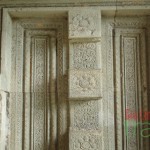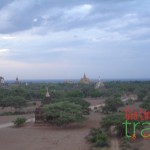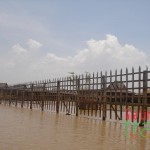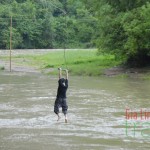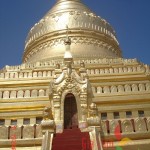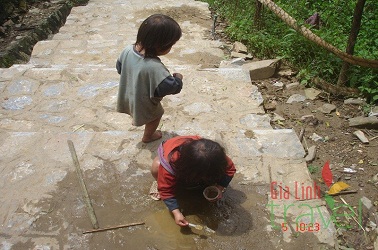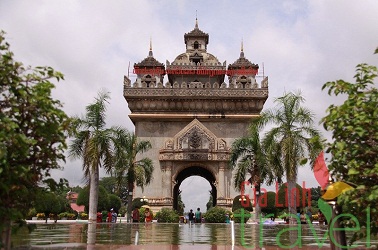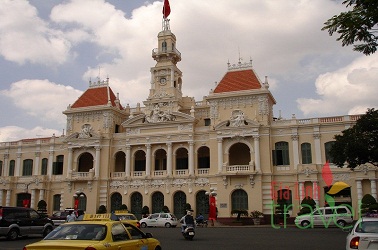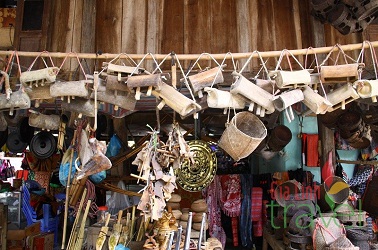Myanmar, Thailand, Cambodia and Laos 25 days tour
GET THE BEST EMOTION FOR CLASSIC CULTURE
I write from my house and wanted to thank you because on the way everything went perfect! It was unforgettable, we will remember forever!
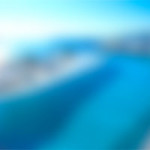
Donna Dolan
+84 972861122
CALL US
Destinations: Yangon/Bagan/Mandalay/Heho/Bangkok/Ayuthhaya/Pitsanulok/Lam pang/Chang Rai/Chang Mai/Phnompenh/Siem Reap/Vientiane/Vang Vieng/Luang Prabang/Pak Ou Cave/Khuangsi Waterfall
Get an unbeaten experience of Myanmar, Thailand, Cambodia and Laos in this 25 day tour. This trip will bring you to rich history, diversified culture, an exclusive holiday through the heart of four countries.
Travel to Myanmar on your first-hand part of the tour; uncover all highlights of Myanmar from the bustling city of Yangon, ancient Bagan kingdom to the picturesque floating market in Inle Lake. Keep the journey on visiting Thailand with diverse cultural landmarks and spectacular scenery boasting abundant natural surroundings and traditional Thai architecture.
The trip will end with discovering the magical sights of Luang Prabang, Vientiane and Vang Vieng after exploring the awe-inspiring temples of Angkor and the bustling capital city – Phnom Penh. If you have the luxury of time, we recommend slowing the pace down even more and enjoying these fantastic highlights in more depth.
PROGRAMME IN DETAILS
B=Breakfast, L=Lunch, D=Dinner, G=Guide
Day 1: Yangon arrival (G)
Arrive in Yangon where you will be welcomed by your local tour guide and transferred to your hotel to drop off you luggage. If you arrived by mid day flight, we may proceed for lunch. After lunch, a walk through “downtown” Yangon, a diverse mix of faded colonial architecture from the British times, and high-rises built by more recent investors; Sule Pagoda, built in the early 3rd century is a landmark in the city centre.
Late afternoon visit the magnificent Shwedagon Pagoda of Rudyard Kipling fame and one of Myanmar’s most sacred places. The massive bell shaped stupa is plated with gold and the tip of the stupa is set with diamonds and rubies, sapphires and topaz – a stunning sight as the sun sets and a most fitting place to begin our trip in this :Golden Land”. Overnight at the Hotel.
Day 2: Yangon/Bagan by flight (B, G)
This morning we head for the airport to get the early morning flight to Bagan. Check into the hotel and depart for a sightseeing excursion around the Bagan Archaeological Zone World Heritage Area. A comprehensive exploration of Bagan includes Nyaung Oo market; Shwezigon Pagoda, the prototype of later Myanmar stupas; Kyansittha Umin; Wet-kyi-inn Gubyaukgyi Temple with exquisite mural painting of 13th century and Htilominlo Temple.
In the afternoon, after a visit to lacquer ware workshops; continue to Manuha Temple built by exile King Manuha; Nanphaya, said to have been the residence of King Manuha; Ananda Temple, architectural masterpiece and Oak-Kyaung monastery decorated with multi colour mural paintings. Enjoy the breathtaking sunset from one of the temple of Bagan. Overnight at the hotel in Bagan.
Day 3: Bagan/Mandalay by flight (B, G)
After breakfast at hotel, transfer to Nyaun U airport for flight to Mandalay. When you arrive at Mandalay airport, drive to ancient capital of Amarapura, the city of Immortality for a visit to Bagaya Monastery with a famous collection of Buddha images; weaving industries, two-century old U-Bein teak bridge on the Taungtaman Lake and observe the lunch process of thousand of monks who take their last meal of the day at 10:00 am in total silence. Proceed to Mandalay and check in at the hotel.
After refreshment, you will take a sightseeing tour of Mandalay which includes Mahanumi, a life like Buddha image. Mandalay is the last capital of Myanmar and that make her to be the best place to see all the traditional arts and crafts. Start visiting gold leaf making work-place and see how the gold leaf is being made by hand in a traditional way. Continue visit the Old Palace grounds; Kuthodaw Pagoda, known as the world’s largest book for its 729 marble slabs inscribed with the Buddha’s Doctrine; Golden Palace Monastery, noted for its exquisite wood carvings and enjoy the panoramic view of the city from Mandalay Hill. Overnight at the hotel in Mandalay.
Day 4: Mandalay/Heho/Inle Lake by flight (B, G)
After breakfast, depart the hotel for flight to Heho on the Shan plateau. Transfer by road to Inle Lake and transfer to our hotel by long tail boat across the lake. Upon arrival, check in at hotel. In the afternoon, we plan to spend the day visiting villages and sampling the spectacular array of traditional handicrafts. You will see the unique method locals use to row their boats, fishermen with their own style of fishing, floating farms and gardens and a handloom weaving cottage with its own showroom. You will visit Phaungdawoo Pagoda which houses the five most revered Buddha Images in the southern Shan State. Overnight at the hotel on Inle Lake.
Day 5: Inle Lake/Heho/Yangon by flight (B, G)
We are heading back down country today to return to the airport at Heho for our flight to Yangon. Our route takes us back to Heho and down the escarpment to Nyaung-Shwe for a busy local market. Check in at airport and fly back to Yangon. Upon arrival, the car will take you to the hotel. The rest of the day will be your own for strolling the city. Overnight in Yangon.
Day 6: Yangon/Bangkok (B, G)
After breakfast, you’ll be free until your driver arrives to take you to the airport for your flight to Bangkok. On arrival, you’ll be met and driven to your hotel. The rest of day will be your own. You will spend the night at hotel in Bangkok.
Day 7: Bangkok/Ayuthaya/Lopburi/Pitsanulok (B, L, G)
After breakfast at your hotel, you’ll be picked up to Bang Pa In for a scenic boat trip to Ayutthaya. You’ll visit Wat Yai Chaya Mongkol and the ancient ruins of Wat Chai Wattanaram. Then, you continue to visit Lopburi, where we will take you around the city in pedaled rickshaws. After lunch at a local restaurant, continue to Phitsanulok. You will spend the night in Phitsanulok.
Day 8: Pitsanhuloke/Sukhothai/Lampang (B, L, G)
In the morning, you will visit Wat Maha That and its highly revered Buddha statue, Phra Buddha Jinaraj. Then, the car will take you to Sukhothai, where you will visit the ancient ruins at Sukhothai Historical Park and Wat Si Chum with it’s gigantic Buddha statue. Continue to Sri Satchanalai for lunch. Upon arrival in Lampang, we will take you on a tour of the old city on horse carriages. You will also visit Baan Sao Nak, a 100-year old teak-wood mansion, and Wat Don Tao. You will overnight in Lampang.
Day 9: Lampang/Phayao/Chang Rai (B, L, G)
After a brief visit to the morning market, the car will take you to Phayao with the biggest natural lake in Thailand. Then, you will proceed to Chiang Rai. After lunch at a local restaurant, you’ll visit the hill tribe community project at Ban Lorcha. Drive via Mae Sai, the northern Thai town to the Golden Triangle, where the borders of Thailand, Myanmar and Laos converge. After you have a boat trip on the Mekong River, the car will take you to Chiang Rai. You will overnight at hotel in Chiang Rai.
Day 10: Chang Rai/Chang Mai (B, L, G)
After breakfast, you’ll depart for Chiang Mai and visit the local handicraft centers around Chiang Mai.
Lunch at a local restaurant. In the afternoon visit Wat Doi Suthep, a famous landmark of the city, tucked away in the mountains at an elevation of 1,056 meters. The temple is reached by climbing 290 steps, flanked by a NAGA balustrade on both sides.
Optional evening program: Enjoy a typical Kantoke dinner with a presentation of traditional dances from Northern Thailand.
Day 11: Chang Mai/Bangkok (B, L, G)
In the morning, you will visit the Mae Saa Elephant camp and watch the skilled elephants at work (Optional: 1-hour elephant ride). Then, you’ll continue to visit an orchid farm. After lunch at a local restaurant, free time until transfer to the airport for your flight to Bangkok. You will spend the night in Bangkok.
Day 12: Bangkok/Phnom Penh (B, G)
After breakfast, you’ll be free until transfer to the airport for your flight to Phnom Penh. Arrive in Yangon where you will be welcomed by your local tour guide and transferred to your hotel. The rest of the day will be your own for strolling the city. Overnight in Phnom Penh.
Day 13: Phnom Penh (B, L, G)
After breakfast, you’ll visit the Victory Monument, and the National Museum, also called Musee des Beaux-Arts. A French archaeologist and painter, Georges Groslier, designed it in Khmer style in 1917. The museum contains a collection of Khmer art – notably sculptures – throughout the ages. Visit the Royal Palace, built by King Norodom in 1866 on the site of the old town, and the Silver Pagoda. Located within the Royal Palace, the Silver Pagoda is so named because of its floor, which is made up of 5000 silver tiles. The treasures found inside include a solid gold Buddha encrusted and weighing 90 kilograms and a small 17th century emerald and baccarat crystal Buddha. End your afternoon with the visit of the Wat Phnom Temple, Phnom Penh’s namesake, from where you can enjoy views over the tree-lined avenues of Phnom Penh during sunset. Overnight in Phnom Penh.
Day 14: Phnom Penh/Siem Reap (B, L, G)
Breakfast at hotel. Transfer to Phnom Penh International Airport and departure by Siem Reap Airways International or similar to Siem Reap. Arrive at Siem Reap International Airport and transfer to the hotel (rooms may not be ready until the afternoon).
Visit the Roluos Group. The monuments of Roluos, which served as the capital of Indravarman I (reigned 877-89), are among the earliest large, permanent temples built by the Khmers and mark the beginning of Khmer classical art. Preah Ko erected by Indravarman I in the late 9th century dedicated by the King to his ancestors in 880. Bakong the largest and most interesting of the Roluos group temples, with his active Buddhist monastery just to the north of the east entrance. Lolei built on an islet in the center of a large reservoir (now rice fields) by Yasovarman I, the founder to the first city at Angkor.
In the afternoon, continue your temple tour to the unique interior brick sculptures of Prasat Kravan, Srah Srang (“The Royal Baths” was once used for ritual bathing), Banteay Kdei (surrounded by 4 concentric walls), Eastern Mebon, (guarded at its corner by stone figures of harnessed elephants, some of which are still in a reasonable state of preservation) and the mountain-temple of Pre Rup until sunset.
Day 15: Siem Reap (B, G)
In the morning, visit the most famous of all the temples on the plain of Angkor: Angkor Wat. The temple complex covers 81 hectares and is comparable in size to the Imperial Palace in Beijing. Its distinctive five towers are emblazoned on the Cambodian flag and the 12th century masterpiece is considered by art historians to be the prime example of classical Khmer art and architecture. Angkor Wat’s five towers symbolize Meru’s five peaks – the enclosed wall represents the mountains at the edge of the world and the surrounding moat, the ocean beyond.
In the afternoon, visit the South Gate (with its huge statues depicting the churning of the ocean of milk), the ancient capital of Angkor Thom (12th century), Bayon Temple (unique for its 54 towers decorated with over 200 smiling faces of Avolokitesvara), the Royal Enclosure, Phimeanakas, the Elephants Terrace and the Terrace of the Leper King. Sunset at Angkor Wat.
Day 16: Siem Reap (B, G)
In the morning, visit the most famous of all the temples on the plain of Angkor: Angkor Wat. The temple complex covers 81 hectares and is comparable in size to the Imperial Palace in Beijing. Its distinctive five towers are emblazoned on the Cambodian flag and the 12th century masterpiece is considered by art historians to be the prime example of classical Khmer art and architecture. Angkor Wat’s five towers symbolize Meru’s five peaks – the enclosed wall represents the mountains at the edge of the world and the surrounding moat, the ocean beyond.
After lunch, you’ll visit the South Gate (with its huge statues depicting the churning of the ocean of milk), the ancient capital of Angkor Thom (12th century), Bayon Temple (unique for its 54 towers decorated with over 200 smiling faces of Avolokitesvara), the Royal Enclosure, Phimeanakas, the Elephants Terrace and the Terrace of the Leper King. Sunset at Angkor Wat.
Day 17: Siem Reap (B, G)
Morning, drive to the remote Beng Mealea temple through the typical Khmer countryside (60Kms from Siem Reap). There is a lot to see in the approximately 2 hours drive as it takes you through many lively villages and along kilometers of rice paddies. Explore the long abandoned temple (11th C), strangled by the jungle. Lunch box will be provided at the site
Proceed to the Banteay Srei temple (10th century) regarded as the jewel in the crown of classical Khmer art. Then visit Banteay Samre, one of the most complete complexes at Angkor due to restoration using the method of “anastylosis”. The name Samre refers to an ethnic group of mountain people, who inhabited the region at the base of Phnom Kulen and were probably related to the Khmers. No inscriptions have been found for this temple, but the style of most of the architecture is of the classic art of the middle period similar to Angkor Wat. The proportions of Banteay Samre are splendid. A unique feature is an interior moat with laterite paving, which when filled with water must have given an ethereal atmosphere to the temple. Drive back to Siem Reap.
Day 18: Siem Reap (B, G)
Early bird special:
Transfer to the archaeological site for the sunrise from the Phnom Bakheng, one of two hills dominating the plain of Angkor, from where you will have a spectacular view of the Western Baray and Angkor Wat: Access is steep and may be slippery especially after rains. Not recommended for elderly people. Or sunrise at Srah Srang.
Return to the hotel for breakfast.
Visit the floating village of Chong Khneas, located 10 kilometers south of Siem Reap. Take a boat trip in a traditional wooden boat on the Tonle Sap Lake, the “Great Lake” of Cambodia, one of the largest in Asia.
Afternoon, visit Preah Khan. Built by King Jayavarman VII, Preah Khan is, like Ta Prohm, a place of towered enclosures and shoulder-hugging corridors. Unlike Ta Prohm, though, it’s well preserved and ongoing restoration efforts should improve this situation. Visit as well Neak Pean a fountain built in the middle of a pool and the temple of Ta Som.
Day 19: Siem Reap (B, G)
In the morning, continue the temple tour to Takeo, Thommanon, Chau Say Tevoda and Ta Prohm, one of the area’s most beautiful temples. Ta Prohm has been left relatively untouched since it was discovered and retains much of its mystery. Its appeal lies in the fact that, unlike the other monuments of Angkor, it was abandoned and swallowed by the jungle, looking very much the ways most of the Angkor temples appeared when European explorers first stumbled upon them.
After lunch, visit to “Les Artisans d’Angkor – Chantiers Ecoles” of Siem Reap and spend time at leisure at a local market (if time permits). Transfer to Siem Reap International Airport for departure flight to the next destination.
Day 20: Siem Reap/Vientiane (B, G)
After breakfast; there will be free time before catching a your flight to Vientiane. Upon arrival at Wattay Airport, you will be met and transferred to your centrally located hotel. After a short rest, we start visiting the major sights of the capital; including Wat Sisaket, the oldest temple with thousands of miniature Buddha statues, and the former royal temple of Wat Prakeo, which previously housed the famous Emerald Buddha Image. Enroute to Lao’s national icon, the precious and sacred structure of That Luang Stupa, you will have the opportunity to take some pictures of the imposing Patuxay Monument, which is known as Vientiane’s own Arc de Triumph. The Mekong river side is the perfect place to end the day and admire the sunset. Overnight in Vientiane.
Day 21: Vientiane/Vang Vieng (B, L, G)
We leave the capital early for our journey northbound; we will see some breathtaking scenery enroute as we pass through spectacular countryside towards the mountainous region. Along the way we visit the busy and colorful market of Thalat where various hill tribes come to trade goods and buy provisions. A next stop of our trip is Vang Xang, famous for the archeological site dating back 11th century. We reach our final destination Vang Vieng, which is nestled on a bend of the Nam Song River. Its stunning scenery with limestone outcrops remains unspoiled, despite recent developments with the advent of tourism. After checking into your hotel you are at your own leisure. Overnight in Vang Vieng.
Day 22: Vang Vieng/Luang Prabang (B, G)
Heading 2km out of Vang Vieng town we explore the famous caves of Tham Jang, which was once used by the local people as a hideout from Chinese invaders. We also cross the river to Ban Huai Ngai, a very pleasant village where we can explore the different lifestyles of the locals. Upon leaving Vang Vieng, the roads begin to deteriorate; however the stunning mountain scenery makes for an interesting journey. We wind our way through the mountains to Luang Prabang. This town with its gleaming temple roofs, fading colonial architecture and stunning mountain backdrop has been claimed by UNESCO to be “the best preserved traditional city in South East Asia”. There is little traffic on Luang Prabang roads and monks in orange robes scurry in all directions carrying umbrellas to shade themselves from the sun. Overnight in Luang Prabang.
Day 23: Luang Prabang (B, L, G)
The former Royal Palace has been turned into a National Museum (closed Tuesdays). This interesting structure displays a collection of artefacts reflecting the richness of Lao culture dating from the days of the early kings right through the last sovereign. Today we also have enough time to explore some other landmarks, including the impressive stupa of Wat Visoun, the shrine of Wat Aham, the city’s oldest temple of Wat Sene and Wat Mai with its five tiered roofs. A visit to Luang Prabang would be incomplete without ascending the 329 steps to the top of Phousi Hill for a beautiful sunset view of the city and its glowing reflection on the Mekong River. Overnight in Luang Prabang.
Day 24: Luang Prabang/Pakou caves (B, L, G)
Today, we continue our city tour, seeing the magnificent Wat Xieng Thong, which nestles at the meeting of the Mekong and the Nam Khan River. The temple structures are decorated in various ways with gilded stuccoes and doorways. The back wall has an intriguing large flame ‘tree of life” pattern set in coloured glass mosiacs. We then embark on a cruise upstream on the Mekong River, which also gives us a taste of the tranquil countryside and an interesting visit to the mysterious Pak Ou Caves, two linked caves crammed with thousands of gold lacquered Buddha statues of various shapes and sizes left by pilgrims. Along the way, we stop at Ban Xang Hai, where the local rice wine is produced. On our return, we drive to the famous weaving village of Ban Phanom where shoppers have a chance to try their hand at bargaining. Overnight in Luang Prabang
Day 25: Luang Prabang departure (B, G)
You will have free time to wander around the town and explore the Central Market before transferring to the airport for a departure flight.
Price in US$ per person:
Our price includes:
- Breakfast and accommodation sharing a twin or double room.
- Pick-ups and transfers by private air-conditioned car as specified in the itinerary above
- Travel by private, air-conditioned car with an experienced, safe driver.
- Boat cruise as mentioned.
- Domestic flight tickets in Myanmar: Yangon-Bagan-Mandalay-Heho-Yangon with airport tax
- Domestic flight tickets in Thailand: Chiang Mai-Bangkok with airport tax
- Domestic flight tickets in Cambodia: Phnom Penh-Siem Reap with airport tax
- The services of experienced English-speaking guides as indicated in the itinerary except leisure time
- Lunches and dinners, as specified, in the good local restaurants, picnics where suitable restaurants are not available
- Where necessary, entry fees for all visits as mentioned in the programme.
- VAT and other taxes.
Our price does not include:
- International flight tickets and airport tax.
- Visas
- Other meals not mentioned.
- Drinks, gratuities, tips and personal expenses.
- Insurance.
Hotel list for Five Star standard:
- Yangon: Trader Hotel (***** sits at the centre of the capital, the perfect base for taking in the city’s distinctive and fascinating culture) or similar
- Bagan: Tharabar Gate Hotel (***** surrounded by more than 4000 ancient temples and Pagodas) or similar
- Mandalay: Sedona Mandalay Hotel (***** ideally located in the heart of the city and faces the majestic Royal Palace and Mandalay Hill) or similar
- Inle Lake: Inle Resort (***** perfectly situated in the Inlay Lake, one of the finest resorts) or similar
- Bangkok: Amari Watergate Hotel (***** overlooking views of the city centre) or similar
- Phitsanulok: Pattara Resort and Spa (***** located approximately 15-minutes drive away from Phitsanulok Airport) ) or similar
- Lampang: Lampang River Lodge (*** consists of beautifully decorated Thai style bungalows located on the banks of the Wang River, in beautiful natural surroundings) or similar
- Chiang Rai: Le Meridien Chiang Rai Resort (***** located 10 minutes from Chiang Rai International Airport) or similar
- Chiang Mai: Holiday Inn Chiang Mai (***** only minutes from some of the cities most famous temples and the renowned night bazaar) or similar
- Phnom Penh: Intercontinental Hotel (***** the centerpiece of a secure integrated commercial and retail complex overlooking a lush Khmer inspired garden, highly recognized levels of service) or similar
- Siem Reap: Angkor Palace Resort (***** first Cambodian-owned premier luxury five-star resort accommodation) or similar
- Vientiane: Settha Palace Hotel (***** located right in the city centre, within walking distance) or similar
- Vang Vieng: Villa Namsong Hotel (***** nestled on the tranquil banks of the Song River, elegant colonial architecture, a luxurious garden, a breath-taking view) or similar
- Luang Prabang: La Residence Hotel (***** positioned atop a hill, with stunning mountain views) or similar
Hotel list for Four Star standard:
- Yangon: Grand Plaza Park Royal (**** in the heart of the city’s prized cultural attractions) or similar
- Bagan: Bagan Thande Hotel (**** sits on the edge of the Eastern bank of great Ayeyawaddy river, near one of the sacred stupa, Gawdaw-palin) or similar
- Mandalay: Mandalay Hill Resort (**** lies at the foot of Mandalay Hill with a panoramic view of a myriad of pagodas, face the distinctive architecture of the Royal Palace) or similar
- Inle Lake: Paradise Inle Resort (**** still on the stilts over the lake, wooden walkways connect the rooms with the main reception building, restaurant and jetty) or similar
- Bangkok: Hotel Century Park (**** city centre) or similar
- Phitsanulok: Ayara Grand Palace Hotel (**** located in historical Phitsanulok City, a 10-minute drive from famous Wat Phrasimahathat. Overlooking the Nan River) or similar
- Lampang: Lampang River Lodge (*** consists of beautifully decorated Thai style bungalows located on the banks of the Wang River, in beautiful natural surroundings) or similar
- Chiang Rai: Imperial Golden Trinagle (**** located around 1 km to Anantara Golden Triangle, superior room) or similar.
- Chiang Mai: The Empress Hotel (**** located in central Chiang Mai, a 10-minute walk to the famous Night Bazaar) or similar
- Phnom Penh: Sunway Hotel (**** surrounded by prestigious locations and avenues) or similar
- Siem Reap: Tara Angkor Hotel (**** 5km to Angkor, short ride to the centre of town) or similar
- Vientiane: Novotel hotel (**** ideal location for business trips and holidays) or similar
- Vang Vieng: Vansana Hotel (**** located right in the middle of the Namsong river front, modern amenities in a well-appointed design) or similar
- Luang Prabang: Villa Santi Hotel (**** established in 1992 by Lao businessman Mr. Santi Inthavong in a royal residence) or similar
Hotel list for Three Star standard:
- Yangon: Summit Parkview Hotel (*** short distance from the business district and major sightseeing places) or similar
- Bagan: Thazin Garden Hotel (*** on the high plain surrounded with ancient Pagodas and ruins) or similar
- Mandalay: Mandalay City Hotel (*** an urban resort hotel, the needs of value-orientated business and leisure travelers) or similar
- Inle Lake: Paramout Inle Lake (*** built on stilts and stands majestically in the heart of Inle Lake) or similar
- Bangkok: Bangkok Palace hotel (*** centrally located at the heart of Pratunam, Bangkok’s commercial shopping and entertainment district) or similar
- Pitsanulok: The Amarin Nakorn Hotel (*** located just across the night bazaar, a 5-minute walk from Phitsanulok Railway and the bus station) or similar
- Lampang: Lampang River Lodge (*** consists of beautifully decorated Thai style bungalows located on the banks of the Wang River, in beautiful natural surroundings) or similar
- Chiang Rai: Rimkok Resort (*** good location with a very big swimming pool) or similar
- Phnom Penh: Lux Riverside (*** ideally located in the heart of the vibrant and most touristic street) or similar
- Chiang Mai: Lanna Palace Hotel (*** city centre and near by mountain) or similar
- Siem Reap: Casa Angkor Hotel (*** conveniently location, 10 minutes drive to the world famous Angkor Temples) or similar
- Vientiane: Inter City hotel (*** centrally located, facilitated with basic modern comforts) or similar
- Vang Vieng: Ban Sabai Hotel (*** set on stilts and built in natural materials) or similar
- Luang Prabang: Manoluck Hotel (*** combine modern international luxury with traditional Lao styles) or similar
If, at the time of booking, any hotels or rooms in the list above are fully booked, we will endeavour to find accommodation of a similar standard elsewhere. If the only available accommodation is of a higher or lower standard, we will revise the price accordingly and consult you immediatel
